Images
1. Incipit of Bruni's "Attile"
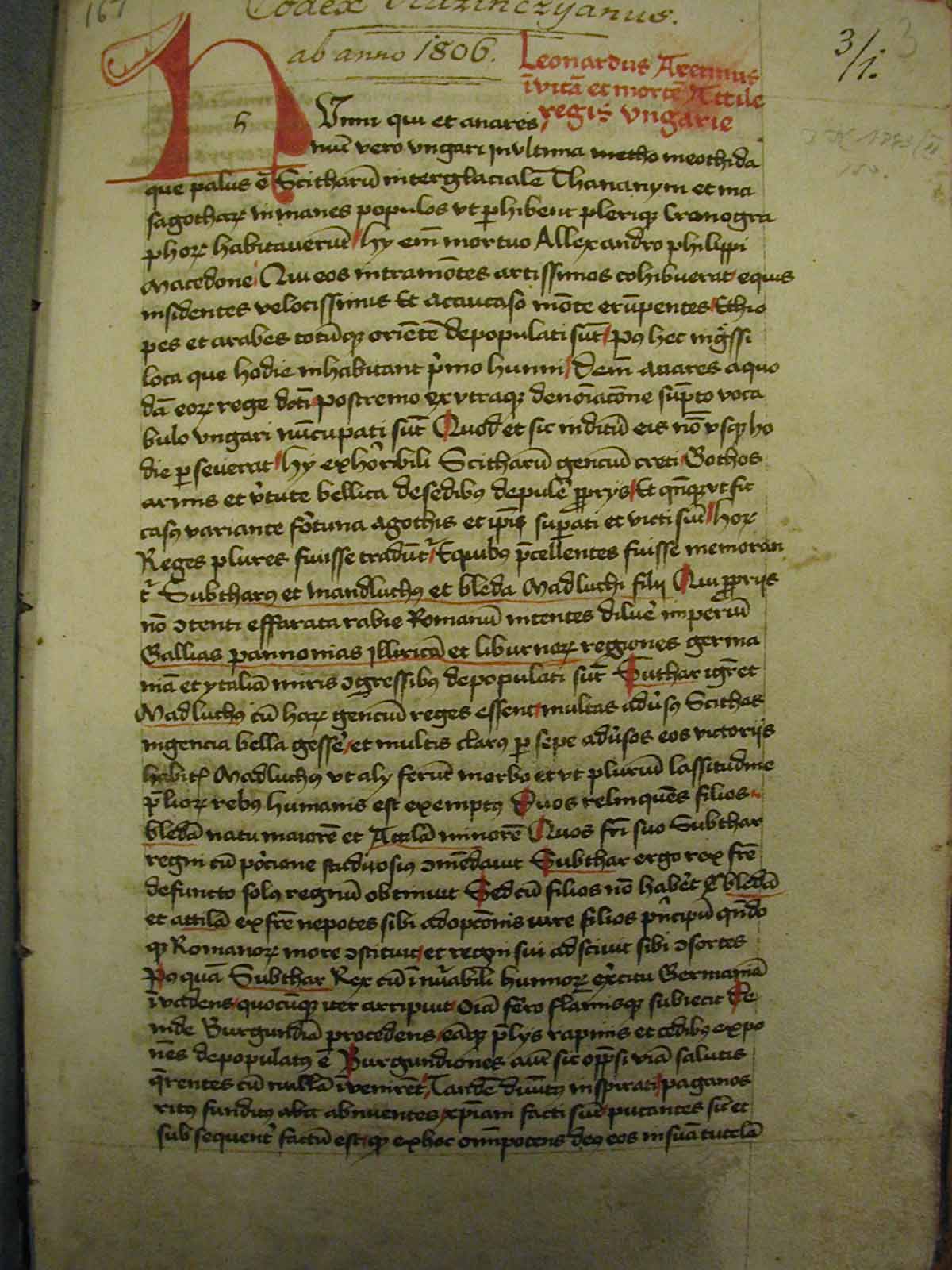 |
2. Page 2 of Bruni's "Attile"
 |
Images 1 through 5 are from Leonardo Bruni's ""Leonardo Aretanus in vitam et Mortem Attile regis Ungariae."
A 15th century ms, 12 pages long. Bruni (1369-1444) was an Italian humanist who is best known for his twelve volume history of Florence,
"Historiarium Florentinarum Libri XII." Other works include "Commentarius Rerum Suo Tempore Gestarum"; "De Romae Origine"; "De Bello
Italico adversus Gothos"; and ten volumes of letters, "Epistolae Familiares." See more on Leonardo Bruni. |
3. Page 3 of Bruni's "Attile"
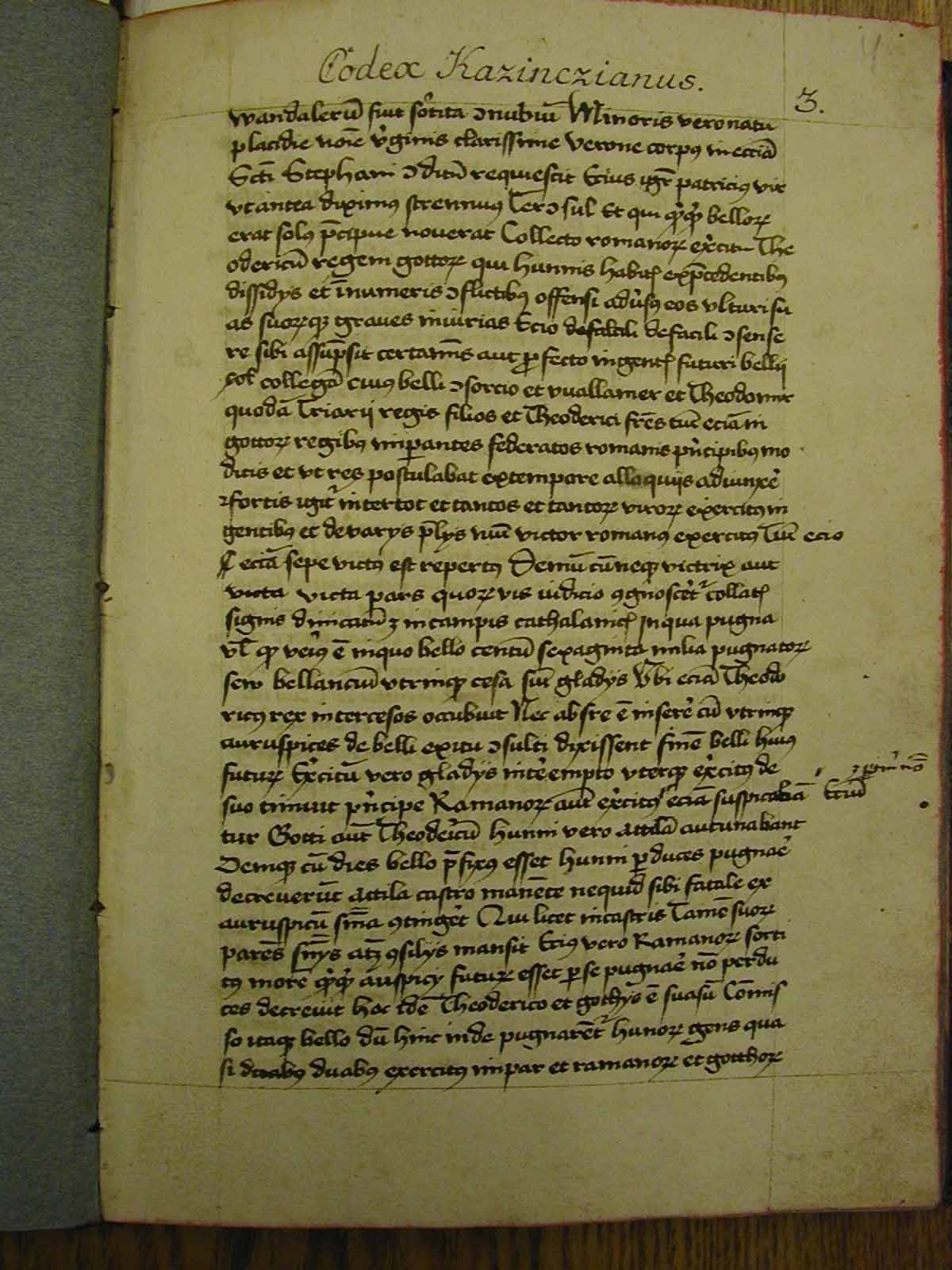 |
4. Page 5 of Bruni's "Attile"
 |
The legend Codex Kazinczianus refers to the fact that Franciscus Kazinczy was a wealthy Calvinist who had acquired many of the
manuscripts in the Nizhny Novgorod library and donated them to the Sárospatak Reformed College before his death in 1806. |
5. Page 12 (explicit) of Bruni's "Attile"
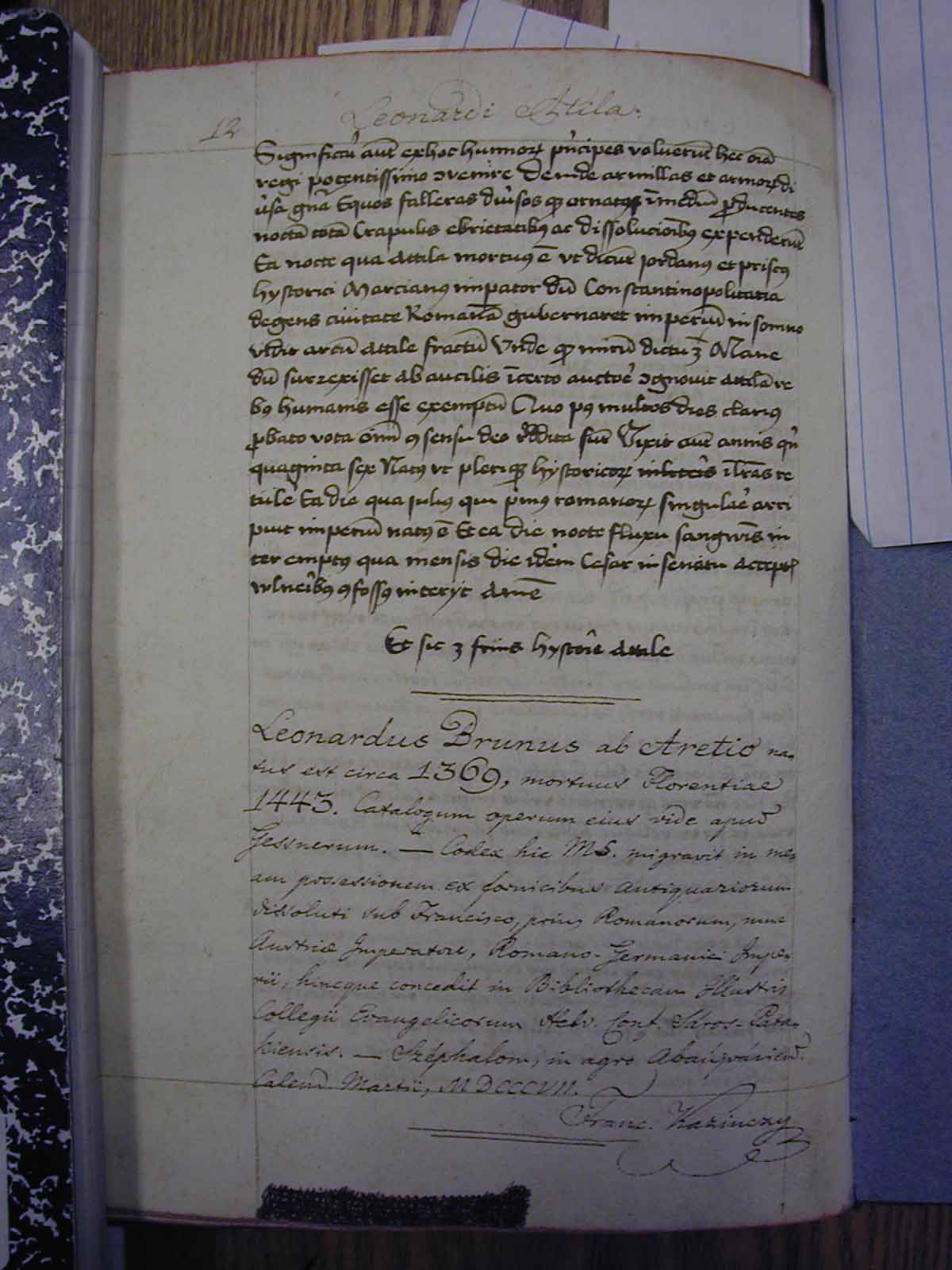 |
6. Incipit of Zagrabiensis' Judicium...
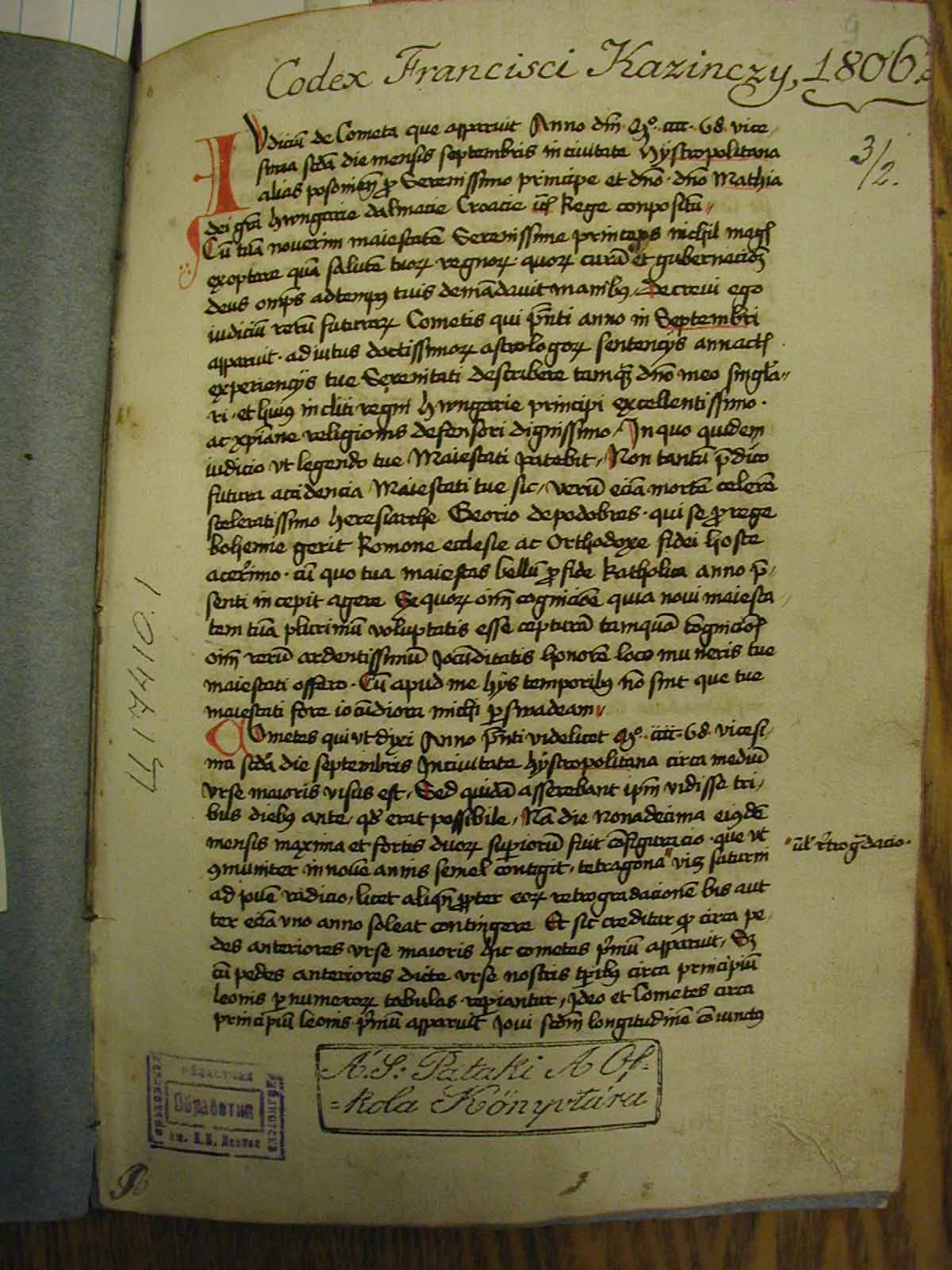 |
The left hand image (No. 5) is page 12 of Bruni's "Attile".
Return to Table of Contents
The right hand image (No. 6) is the incipit of Martinus Zagrabiensis' Judicium de cometa que apparuit Anno Domini 1468. Zagrabiensis, who was
also known as Martin de Ilkusch (1433-1493/94), was a good friend of Regiomontanus and a pupil of Martin Krol, the most famous Polish astronomer before Copernicus.
He studied in Cracow, may have been in Vienna for some time, and was at Academia Istropolitana (University of Pozsony, now Bratislava)
founded by King Mathias of Hungary in 1467. (coninued in the frame below) |
7. Page 2 of Judicium...
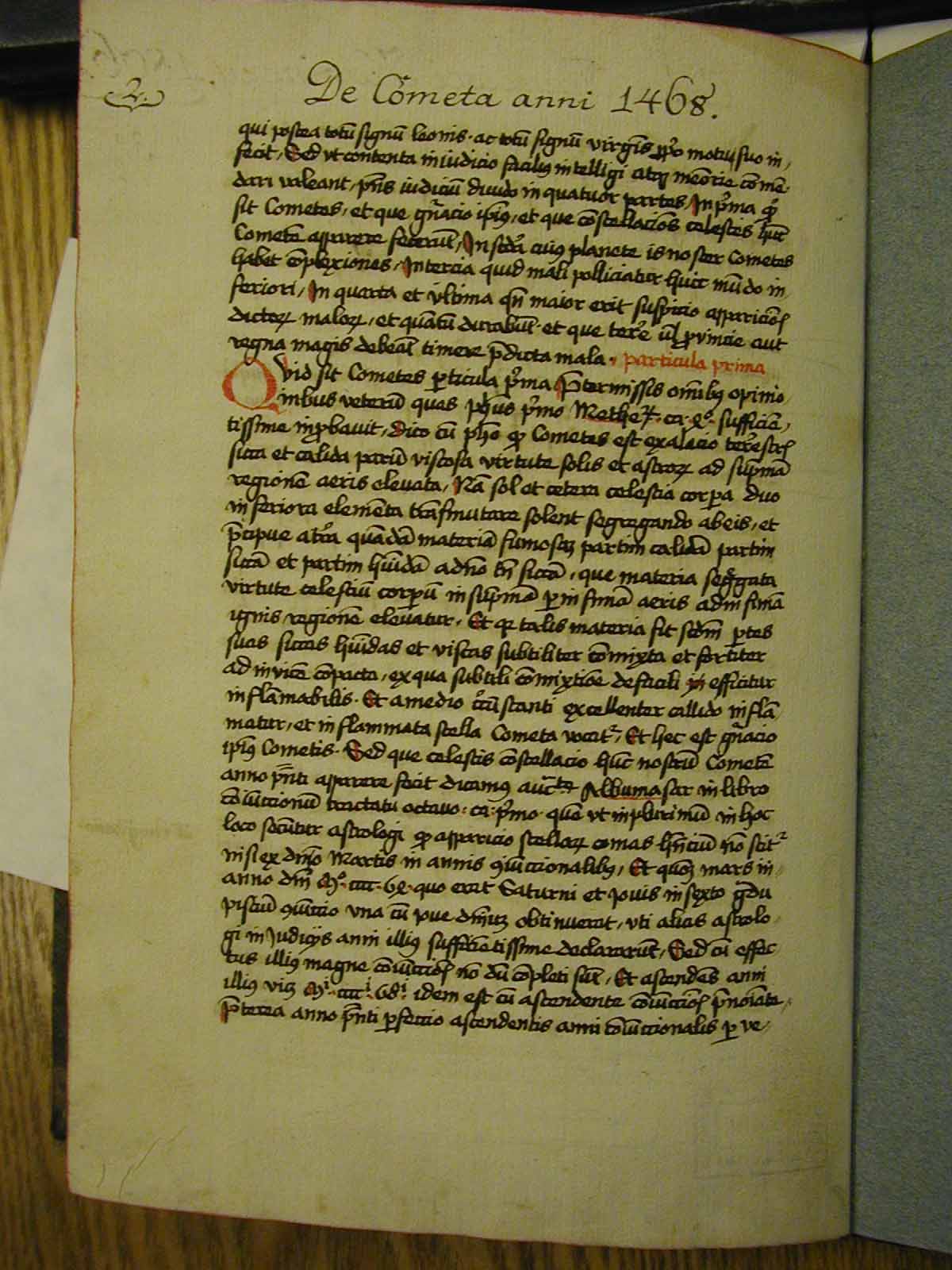 |
8. Page 3 of Judicium...
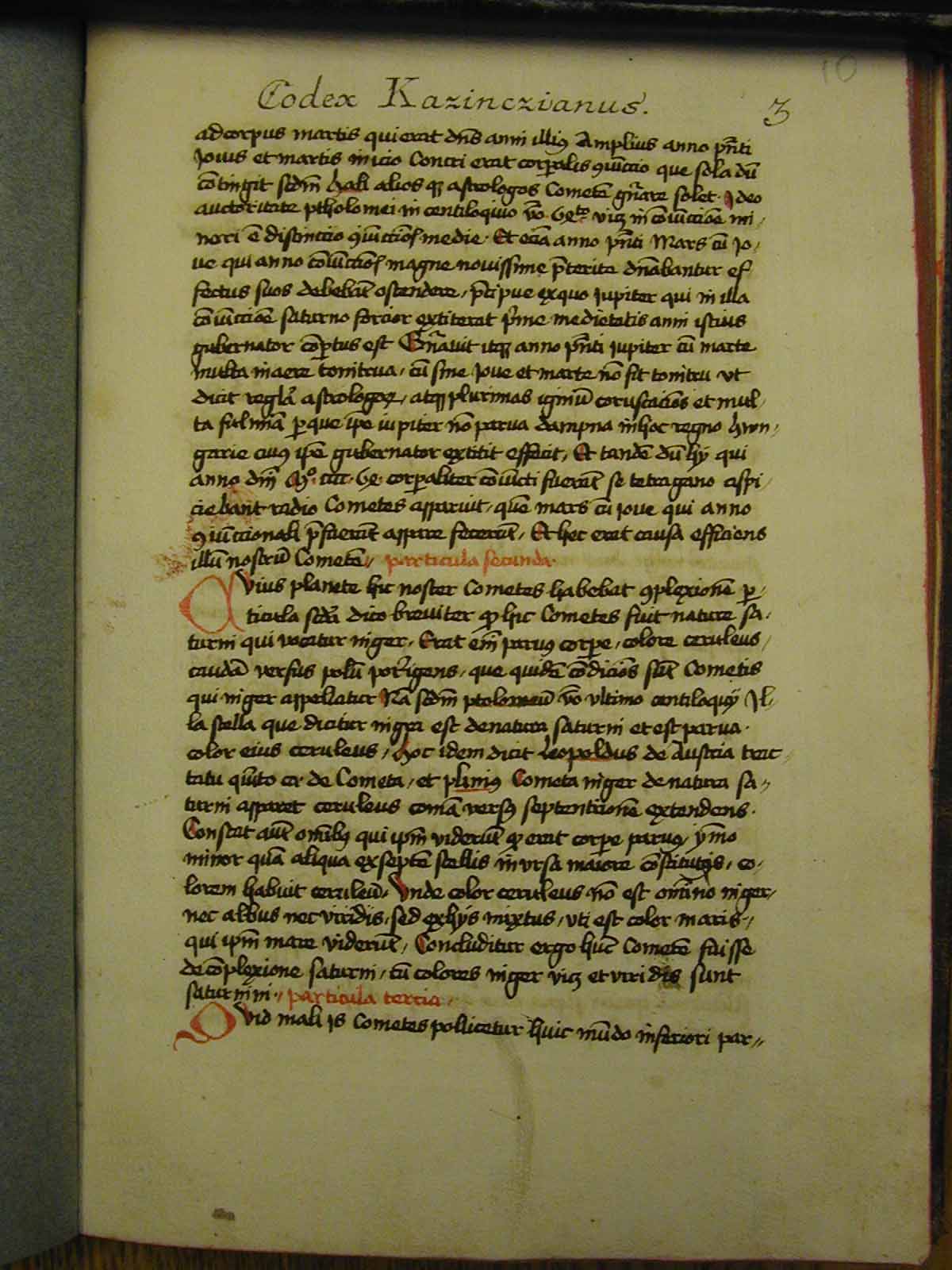 |
The left-hand image is p. 2 of the Judicium by Zagrabiensis, while the right hand image is p. 3 of the same work.
Discussions of Zagrabiensis occur in
a dissertation by Leslie Domonkos, Lynn Thorndike's History of Science and Experimental Magic, vol. 4, and T. Ortvay who wrote a definitive history of the University of Pozsony.
We are indebted to Dr. Darin Hayton of Notre Dame University for discovering the details of Zagrabiensis' life. See also work
on the comet of 1472.(Cont'd in the frame below) |
9. Page 4 of Judicium...
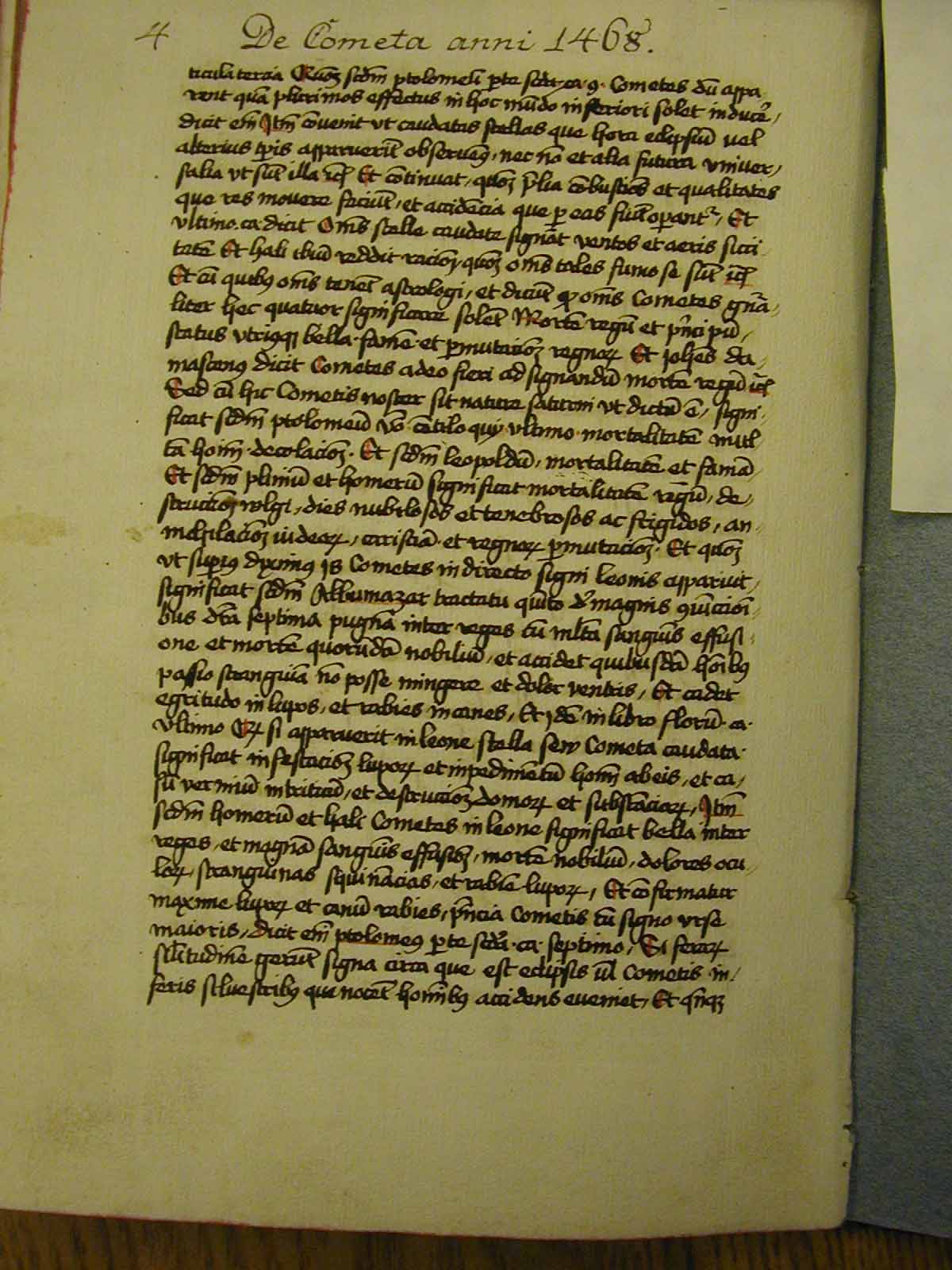 |
10. Page 11 of Judicium...
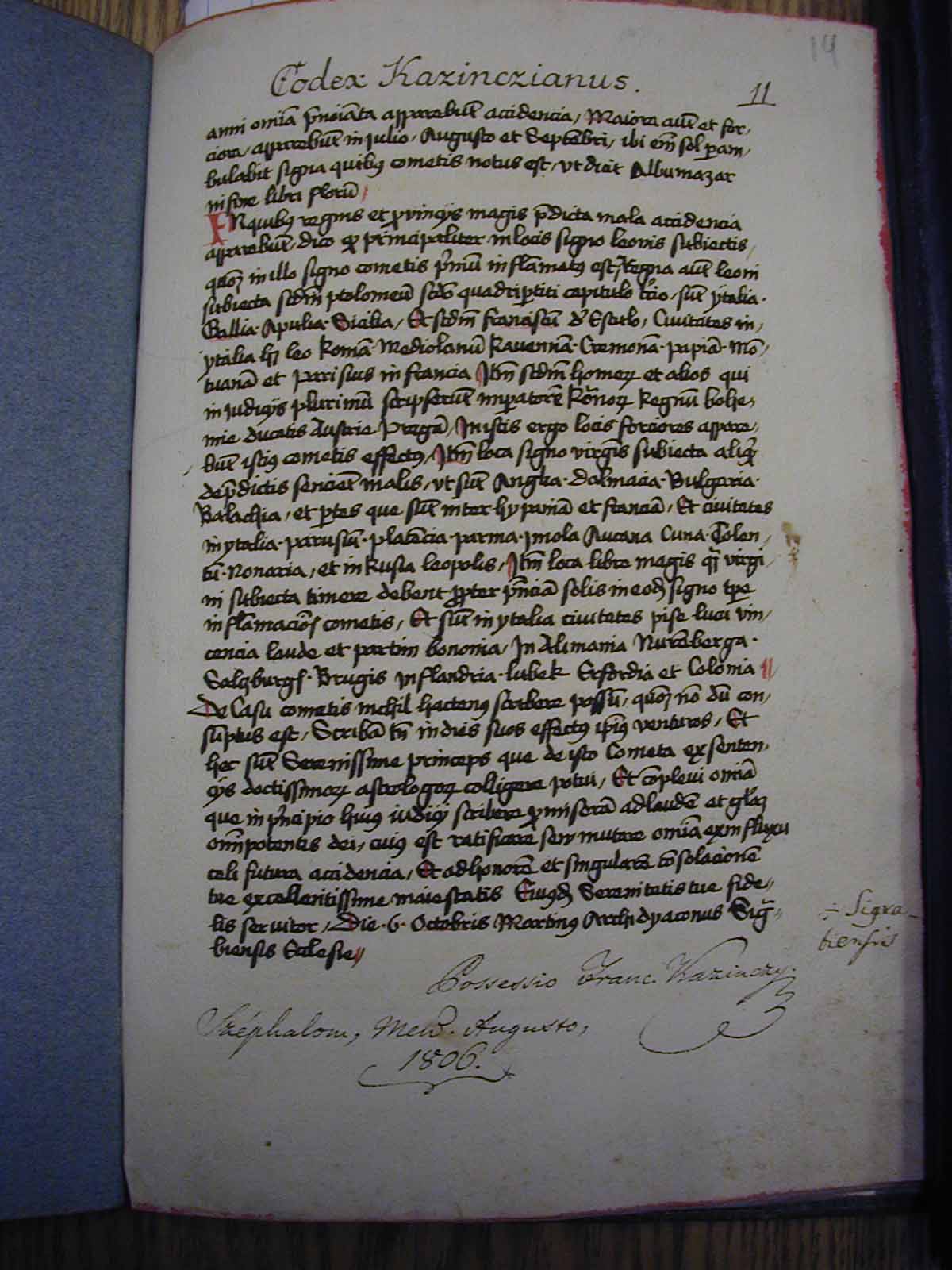 |
The left hand image is p. 4, while the right hand image is p. 11 of Zagrabiensis' Judicium...
Several other copies of this text exist: two in the Bayerische Staatsbibliothek in Munich and one copy in Strasbourg, which is bound with his work on the comet of 1472.
The comet, known as C/1468 S1,
was visible from Sept. 17 to Nov. 18, 1468 and was discovered by Chinese astronomers.It was in a parabolic orbit and has
not been seen since.
|
43. Folio 5 of Zagrabiensis' Iudicium de cometa...
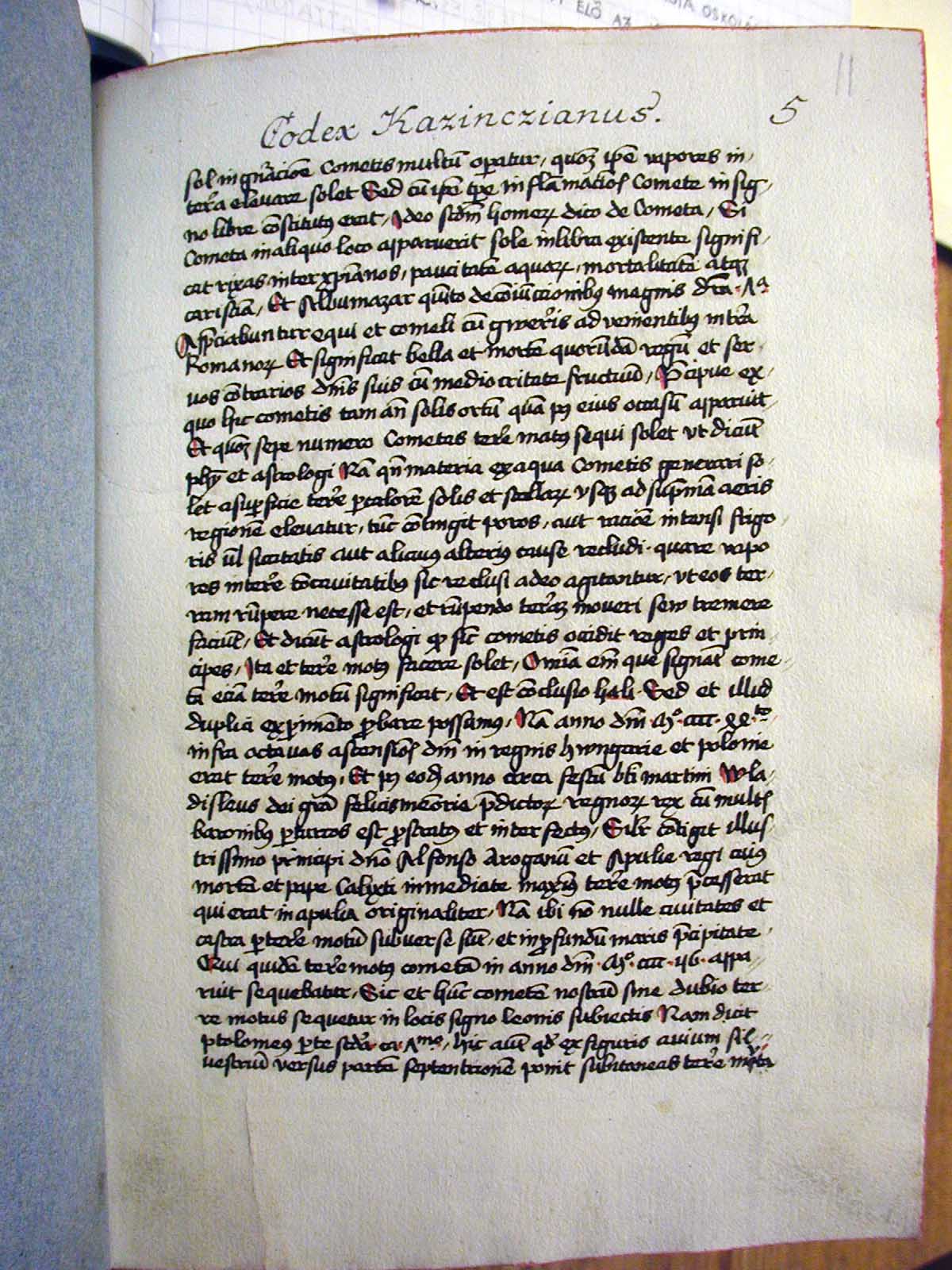 |
44. Folio 6 of Zagrabiensis' Iudicium de cometa...
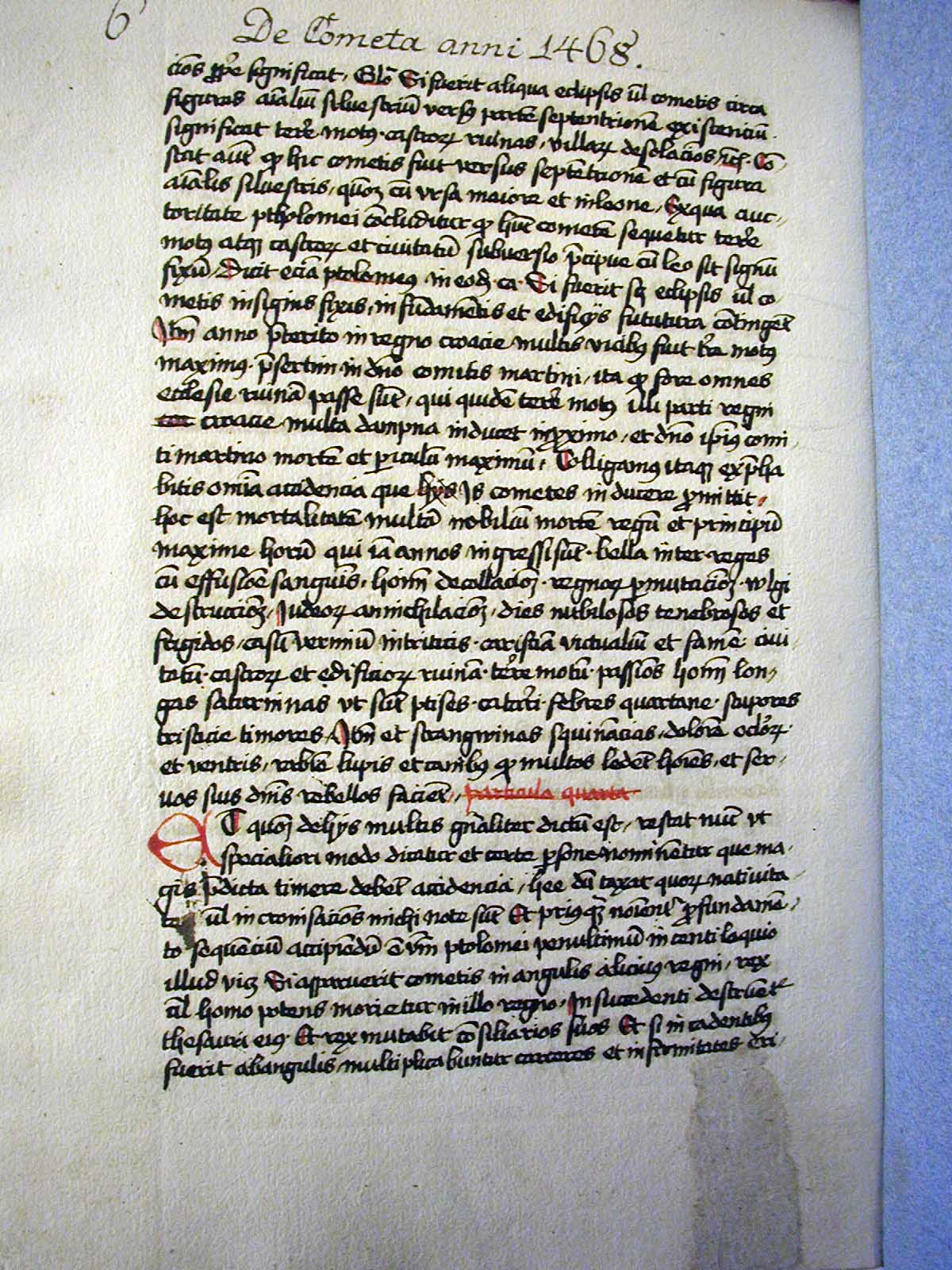 |
These images are, respectively, folio 5 and folio 6 of Martinus Zagrabiensis' Judicium de cometa que apparuit Anno Domini 1468.
See also for extensive commentary.
Images 41 through 47 are Nizhni Novgorod
[1302a]. |
45. Folio 7 of Zagrabiensis' Iudicium de cometa...
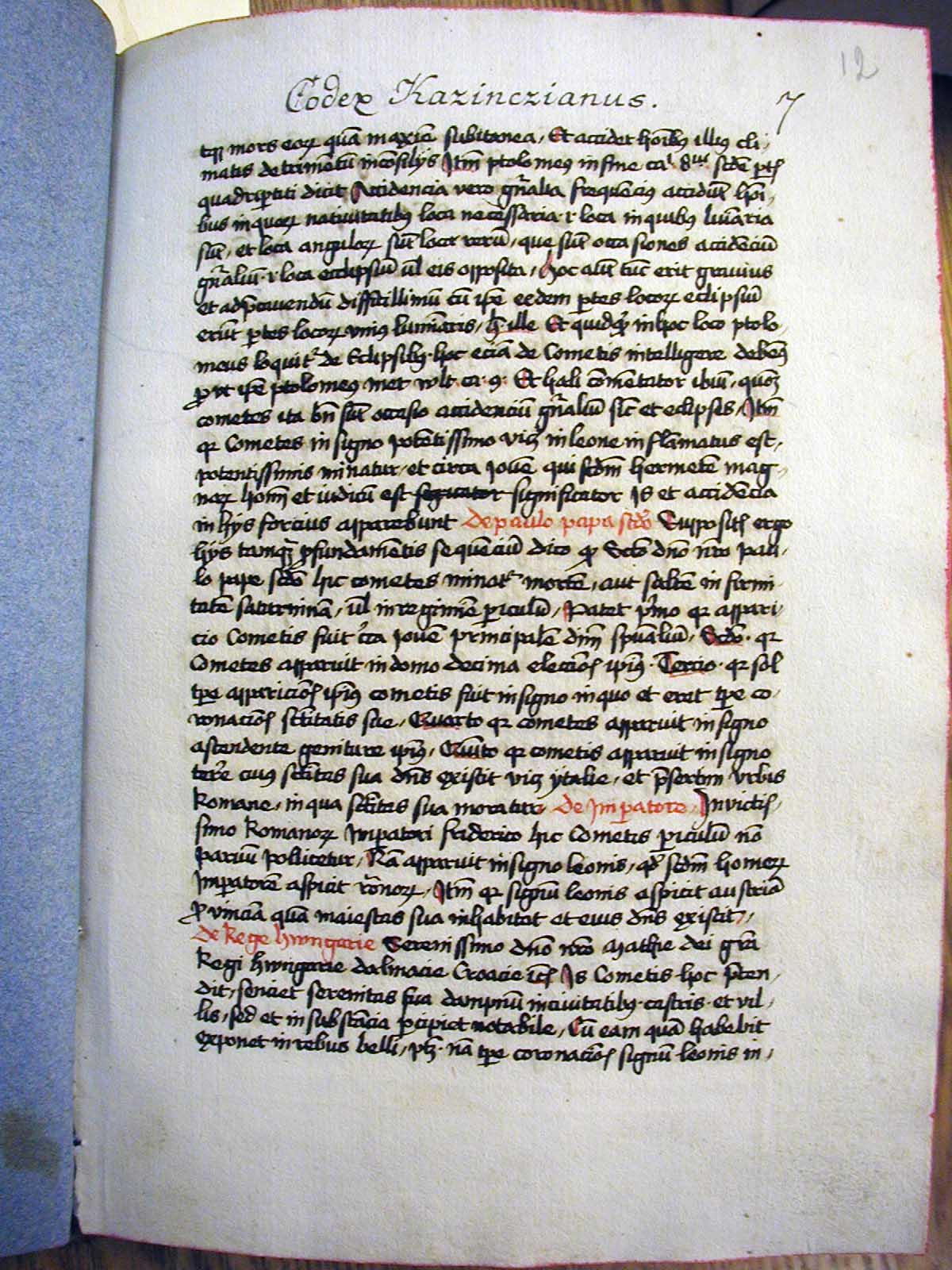 |
46. Folio 8 of Zagrabiensis' Iudicium de cometa...
 |
These images are, respectively, folio 7 and folio 8 of Martinus Zagrabiensis' Judicium de cometa que apparuit Anno Domini 1468.
|
47. Folio 9 of Zagrabiensis' Iudicium de cometa...
 |
48. Folio 10 of Zagrabiensis' Iudicium de cometa...
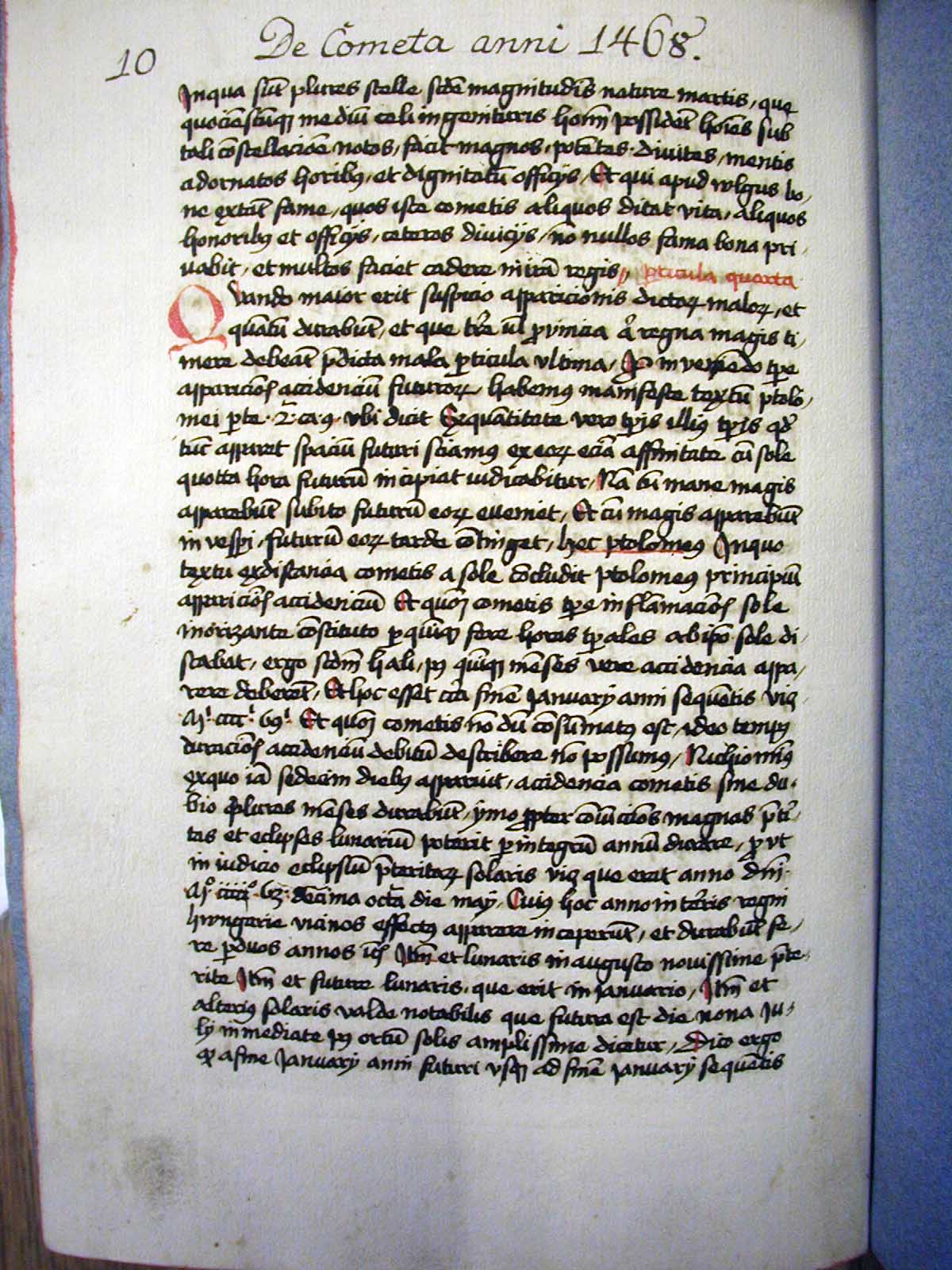 |
These images are, respectively, folio 9 and folio 10 of Martinus Zagrabiensis' Judicium de cometa que apparuit Anno Domini 1468.
. |
49. Folio 11 of Zagrabiensis' Iudicium de cometa...
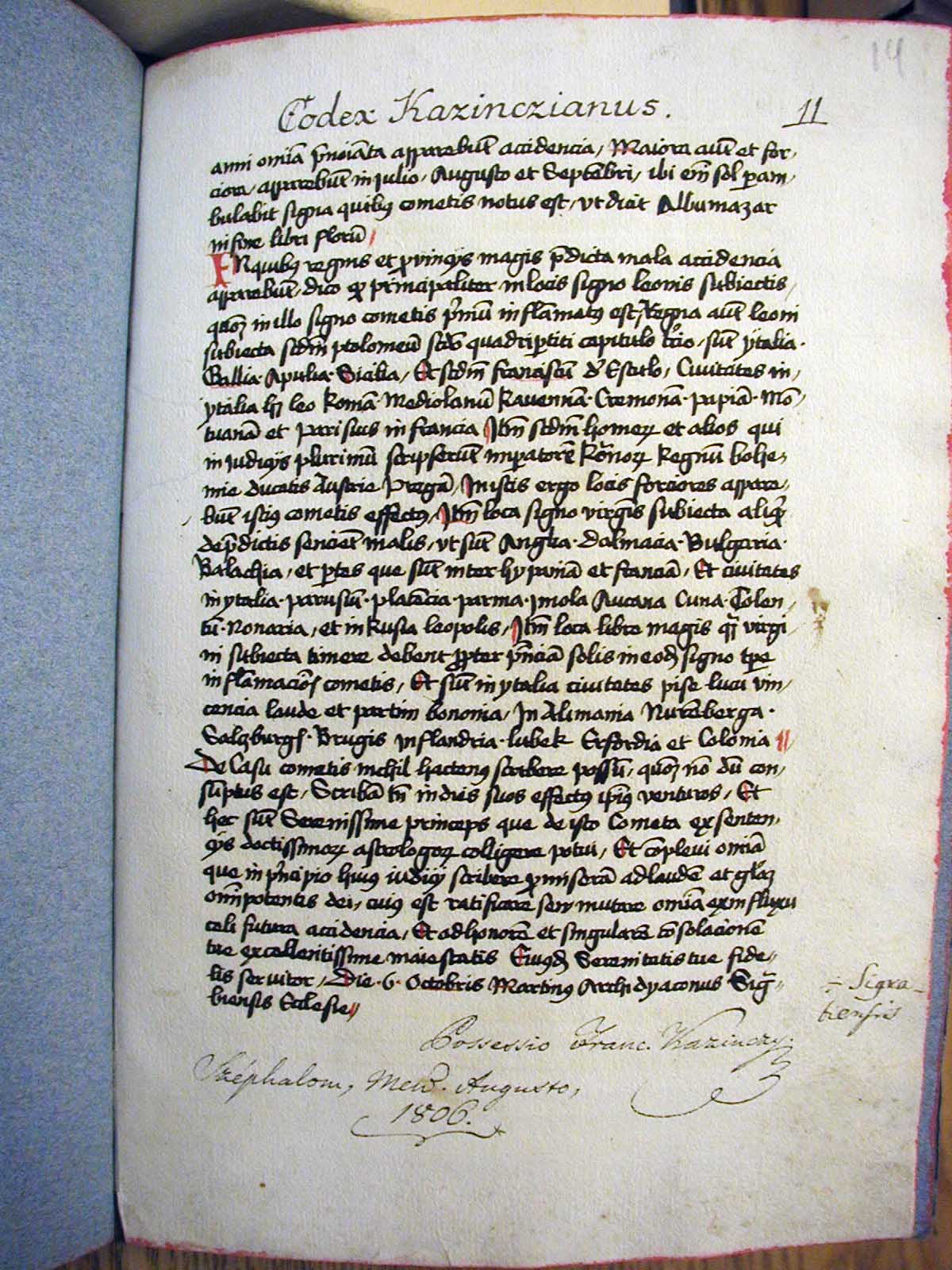 |
Frame left intentionally blank |
The left hand image is folio 11 of Martinus Zagrabiensis' Judicium de cometa que apparuit Anno Domini 1468.
Return to Table of Contents |
11. Page 15 of Fremperger's Historia...
 |
12. Page 18 of Fremperger's Historia...
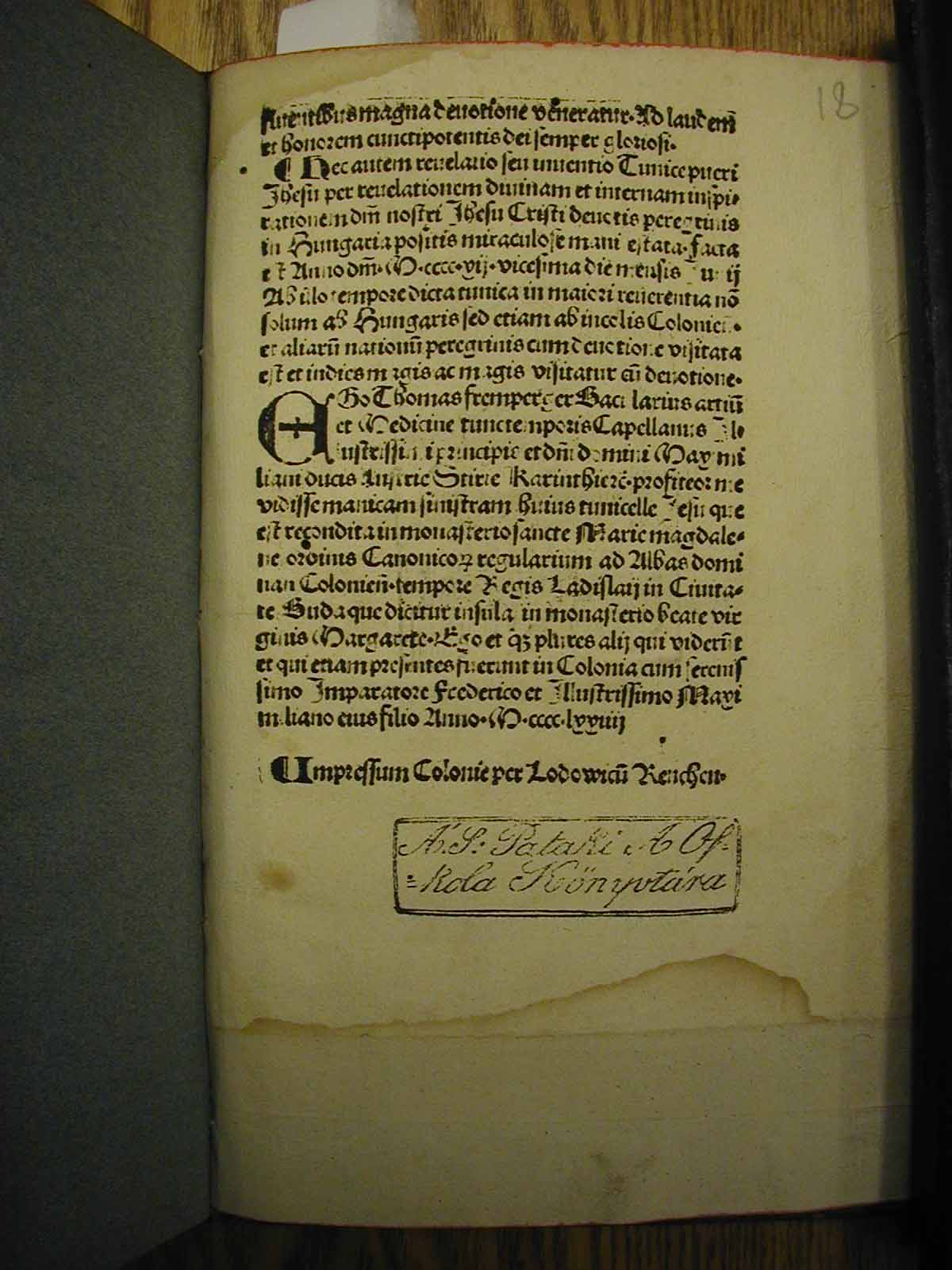 |
Both images are from Thomas Fremperger's Historia Translationis Tunice Iesu Christi de Hungaria ad Civitatem
Coloniensem...[Cologne: L. Renchen, c. 1500]. Quarto. Nizhni Novgorod 0355a; 1302a. HC. 8721. IH. 1360. This may be a unique copy.
Fremperger was probably chaplain to Frederic III and to Maximilian, and saw the relic known as the "blue robe of Christ" on St. Margaret's Island
(an island in the Danube at Budapest)
and subsequently Cologne. See more here.
Return to Table of Contents |
13. Exterior view of Lasko's Sermones...
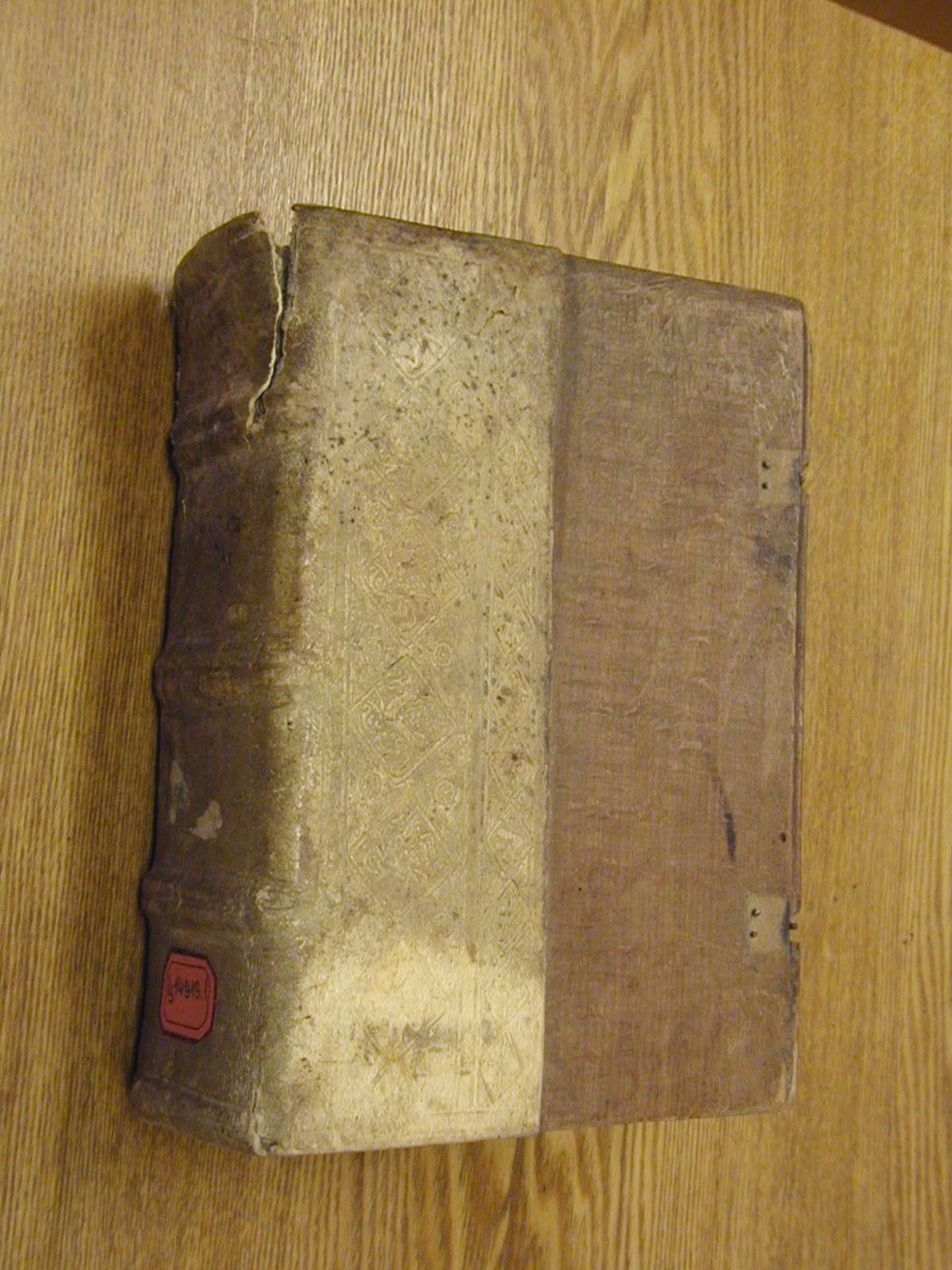 |
14. Folio 1r of Lasko's Sermones...
 |
Osualdus de Lasko (known as Laskai Osvát in Hungarian) ( -1511) Sermones dominicales...Biga salutis intitulati...
[Hagenau: H. Gran pro J. Ryman, 1499]. Quarto. Nizhni Novgorod 0698. Hain 9055. IH 2485.] Also in the
Romanian National Library in Alba Iulia and Bucarest. See
more information |
15. Folio 436r (colophon)of Lasko's Sermones...
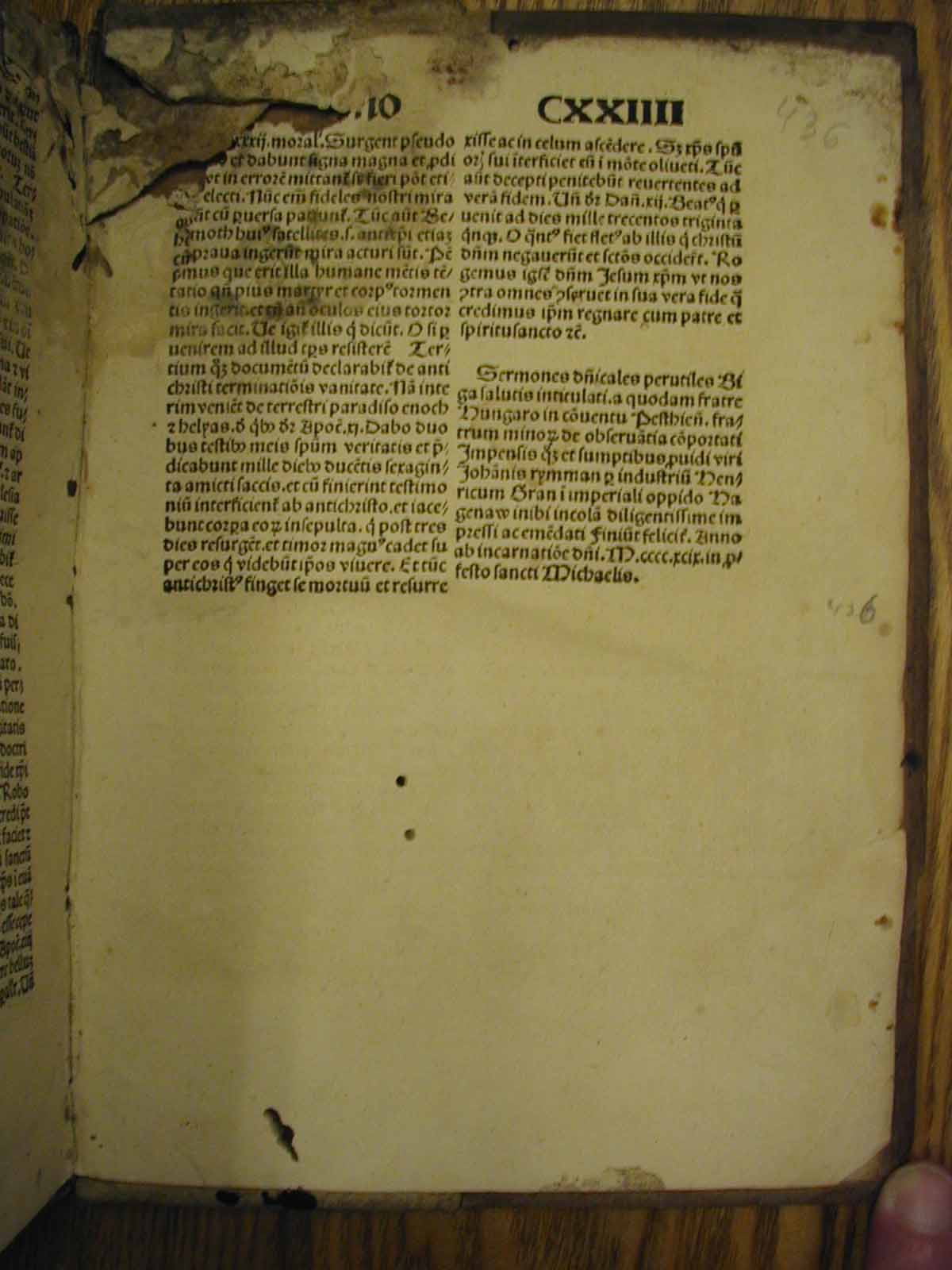 |
Frame left intentionally blank | The left hand image is folio 436r
(colophon) of Lasko's Sermones....
Return to Table of Contents |





















